
New Challenges for Product and Production Engineering
Programme
As participant of the SysInt 2016 you can reach the conference programme using the ConfTool Conference Management System for the SysInt 2016 under:
https://www.conftool.net/sysint2016/
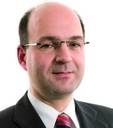
Prof. Dr.-Ing. habil. Ansgar Trächtler
Ansgar Trächtler has studied electrical engineering and got his Dr.-Ing and habilitation at the University of Karlsruhe. Afterwards he has been working for several years in the development of vehicle dynamics control systems at Robert Bosch Company. Since 2005, he is Professor for Automatic Control and Mechatronics at Heinz Nixdorf Institute of Paderborn University and, since 2011, the director of the Fraunhofer Research Institution for Mechatronic Systems Design IEM. His research interests are optimal control, automotive control, development methods for mechatronic systems and hardware-in-the-loop simulation.
Keynote Abstract:
Developing Intelligent Systems – methods, best practice and challenges
Intelligent technical systems (ITS) are characterized by four specific properties: they are adaptive which means that they adapt their behavior autonomously to varying environmental conditions. They are robust and thus can cope with unexpected situations which have not been foreseen in detail during development, they are anticipatory, i. e. on the basis of gained experience possible future trends can be predicted and taken into account for proper decisions and strategies, and finally, they are user-friendly and reveal transparent behavior to specific users. Another common feature is the multi-disciplinary nature of intelligent systems requiring a strongly interdisciplinary development process including methods from systems engineering. With increasing digitalization, product development processes will be closely linked to data management and decision processes. The talk gives an overview on technologies for developing intelligent systems, illustrates their application by several best practice examples and concludes with open questions and challenges.
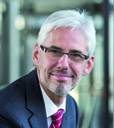
Prof. Dr.-Ing. Berend Denkena
Prof. Berend Denkena is Head of the Institute of Production Engineering and Machine Tools at the Leibniz Universität Hannover. After obtaining doctorate at the Faculty of Mechanical Engineering at the University of Hannover in 1992, he worked as a design engineer and Head of various research groups for Thyssen Production Systems both in Germany and the United States. From 1996 to 2001 he was Head of Engineering and Turning Machine Development at Gildemeister Drehmaschinen in Bielefeld. Since 2001 he has been a full professor of Production Engineering and Machine Tools and director of the Institute of Production Engineering and Machine Tools at the University of Hannover. He is a CIRP Fellow Member. His primary areas of research are geometry and functionalizing manufacturing processes, machine tools for cutting and grinding, production planning and control, and simulation of manufacturing processes.
Keynote Abstract:
Gentelligence or Industrie 4.0 – Technical inheritance within the whole product lifecycle
The last 250 years of technological development in manufacturing have been driven by innovative ideas and have been characterized by a continuous increase of performance. Important milestones of this development were the mechanization of production, the assembly line production and the automated production. The upcoming fourth industrial revolution is ignited by the demand for highly adaptable and connected process chains which are able to produce individualized products in an efficient, reliable and sustainable manner. The DFG funded Collaborative Research Center 653 has been pursuing the idea of sensitive and communicating products since its start in 2005. CRC 653 has realized this vision with the development of integrated sensors, on-demand maintenance and design evolution of products. In addition, material inherent information storage and technologies to deploy the gained information for process planning were focused in this research. An essential part of the realization was the concept of technical inheritance that enables following product generations to adapt to dynamically changing environments and changing requirements. While the vision of the CRC 653 tackles demands like adaptable and meshed process chains, which are also in the focus of the developments within the field of Industrie 4.0, it embraces additional aspects. Industrie 4.0 focuses on the production phase while the CRC considers the entire product life cycle including utilization. The presentation illustrates the relationship between Industrie 4.0 and technical inheritance by means of various applications.
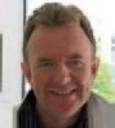
Prof. Gregory O‘Hare
Gregory O‘Hare completed his studies at the University of Ulster graduating with a B.Sc. M.Sc. and PhD He held the position of Head of the Department of Computer Science at University College Dublin (UCD) 2001 – 2004. Prior to joining UCD he has been on the Faculty of the University of Central Lancashire (1984 – 1986) and the University of Manchester (1986 – 1996). He is a Professor within the School of Computer Science at UCD. He has published over 445 refereed publications in Journals and International Conferences, 7 books and has won significant grant income (ca €28.00M). O‘Hare is an established researcher of international repute. His research interests are in the areas of Distributed Artificial Intelligence and Multi-Agent Systems (MAS), and Mobile & Ubiquitous Computing, Autonomic Systems and Wireless Sensor Networks. He has supervised some 37 PhD to completion in his career to date. He referees extensively for Journals, International Conferences and funding agencies including the European Commission, Enterprise Ireland, Science Foundation Ireland, the Netherlands Organisation for Scientific Research, the National Science Foundation (US). In 2003 he received the prestigious Cooperative Information Agents (CIA), System Innovation Award for ACCESS: An Agent Architecture for Ubiquitous Service Delivery. O‘Hare is a Fellow of the British Computer Society, a Fellow of the Irish Computer Society a member of the ACM, AAAI and a Chartered Engineer. He is the Chair of the European Research Consortium on Informatics and Mathematics (ERCIM) Working Group on Sensor Web. He has also held a prestigious Science Foundation Ireland (SFI) Principal Investigator Award 2003 – 2007. He is one of the Principal Investigators and founders of the Science Foundation Ireland funded (€16.4M) Centre for Science and Engineering Technologies (CSET) entitled CLARITY: The Centre for Sensor Web Technologies (2008 – 2013). In 2008 – 2009 he secured a Visiting Research Fellowship to the University of Oxford. In 2010 he was awarded a Fulbright Scholar visiting position at the Computer Science and Artificial Intelligence Laboratory (CSAIL) at Massachusetts Institute of Technology (MIT).
Keynote Abstract:
The Challenge of Ubiquitous Sensing: Is More Always Better?
Ubiquitous sensing demands an ability to effectively sense, route, conflate and utilise an ever increasing and ever diverse sources of streamed data. This presentation will describe attempts to provide the necessary infrastructure to support such an eclectic mix of data sources ranging from physical sensors to social media streams to participatory sensed data. The middleware infrastructure must be agnostic of data source and must treat all such sources as equal. In fusing such data this is often performed in the spatio-temporal domain with proximate data being used to reinforce or uplift the quality of individual data streams. This talk will consider the effect of vast volumes of data and how to ensure that low quality/ low fidelity data does not in effect compromise the overall integrity of the data corpus. It will reflect on the paradox of is more data always better? It will examine how one might introduce a data quality quotient to mixed source mixed quality data mash ups.
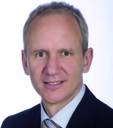
Dr. Gerhard Volkwein
Dr. Gerhard Volkwein is serving as Director Digital Enterprise Architecture at Digital Factory Division of Siemens AG. He joined Siemens in 2010 as Head Strategy Industry Software at former Industry Automation Division. From 2005 to 2009 he held various senior management positions at Atena Engineering GmbH, a provider of advanced engineering services to the Aerospace and Automotive industries. From 1995 to 2004 he spent almost 10 years in the software industry, initially as Technical Director at startup company AnySIM Simulationssysteme GmbH and, since 1999, as Senior Product Manager at Tecnomatix GmbH. He started his career at ifp – Prof. Dr.-Ing. Joachim Milberg Institut für Produktionstechnik GmbH, a spin-off company of the Institute for Machine Tools and Industrial Management (iwb) at the Technical University of Munich. Gerhard Volkwein graduated with a degree in Mechanical Engineering and received a PhD in Manufacturing Simulation, both at the Technical University of Munich.
Keynote Abstract:
Industrie 4.0 from both a user’s and a vendor’s perspective
Digitalization is affecting not only industrial value creation, it rather has a massive – sometimes game-changing – impact on the way how products are being sold and, in particular, on the additional customer value “smart” and “connected” products are able to provide. Those effects are the actual drivers for the continuing digitalization of the industrial value chain. In this context, Industrie 4.0 can be understood either as an enabling approach or as a mandatory reaction on progressing digitalization. The following presentation will elaborate on Industrie 4.0 as well as on various aspects of digitalization from a Siemens perspective. This perspective is unique insofar as it combines both the role of a global manufacturing company as well as the role of a leading enabler of digitalization in the manufacturing industry. To better illustrate the dual role of Siemens, the presentation will provide an insight into the Siemens factory in Amberg, where ongoing digitalization of the entire value chain enables continuous improvements of productivity and quality – based on Siemens technology.

Assistant Professor Nikolaus Correll
Nikolaus Correll is an Assistant Professor in Computer Science at the University of Colorado at Boulder with courtesy appointments in Aerospace, Electrical and Materials Engineering. Nikolaus obtained a degree in Electrical Engineering from ETH Zurich in 2003 with visits at Lund Tekniska Hogskola, Sweden, and Caltech, and earned a PhD in Computer Science from EPFL in Lausanne, Switzerland in 2007. He did a post-doc at MIT CSAIL from 2007 – 2009. Nikolaus is the recipient of a 2012 NSF CAREER award and a 2012 NASA Early Career Faculty Fellowship.
Keynote Abstract:
Material-integrated Intelligence for Robot Autonomy
Advances in miniature electronics, distributed algorithms and manufacturing technology have enabled a new generation of smart composites that tightly integrate sensing, actuation, computation and communication. Such “robotic materials” are inspired by multi-functional natural structures such as the skin of the cuttlefish that can change its color and patterning, bird wings that can change their shape, or the human skin that provides tactile sensing at high dynamic range. I will describe a series of recent results that best illustrate the benefits of material integrated computation: high-bandwidth sensing for texture recognition and localization in artificial skins, distributed optimization for controlling shape change, distributed classification for recognizing gestures drawn onto a modular facade, and feedback control of soft robotic actuators. I will then describe current challenges in robotic grasping and manipulation, and demonstrate how robotic materials can provide critical sensing and control during a series of manipulation tasks with applications to warehouse automation, manufacturing and lab automation.
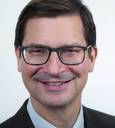
Prof. Dr.-Ing. Michael Freitag
Michael Freitag studied Electrical Engineering at the Brandenburg Technical University Cottbus, specializing in automation and communication technology. He then did his PhD at the Bremen University, focusing on the nonlinear dynamics of production systems. In 2004, he became Managing Director of the Bremen Collaborative Research Centre “Autonomous Cooperating Logistic Processes” (SFB 637), funded by the German Research Foundation (DFG). In 2008, he alternated and led projects with the steel manufacturer ArcelorMittal about the optimization of logistic processes. Beside his industry involvement, he was also guest lecturer at the Jacobs University in Bremen. In 2014, he was appointed as full professor at the University of Bremen.
Keynote Abstract:
Prospects for Intralogistics through Industrie 4.0
This keynote talk will present prospects and first solutions for intralogistics, which were enabled by Industrie 4.0 technologies. These solutions increase the operational safety of floor conveyors, enable a more efficient material supply in job shops, and support a highly flexible material flow by a reconfigurable conveyor system. To increase operational safety of floor conveyors, there are two general approaches: First, installing sensors into the environment and let them monitor the movements of the floor conveyors. Second, installing sensors onto the floor conveyors and let them monitor their local environment. The first approach was used to develop a centralized assistance system for forklift trucks based on infrared technology that enables a combination of collision avoidance and intelligent routing. The second approach was used to apply 2D/3D image processing methods to a local assistance system at a forklift truck. This assistance system notifies the driver of potential hazards. To enable a more efficient material supply in job shops, a demand-driven concept will be presented. The demand at the machines is communicated to the tugger train. The future demand can be forecasted by considering the remaining processing time of the part in the machine and the total processing time of the next part which already waits in the input buffer. The availability of data and the communication between machines, buffers, and tugger trains lead to less train trips and a higher train utilization. To support a highly flexible material flow, a cellular conveyor system, called “Celluveyor“, will be presented. The system consists of numerous hexagonal modules each with three omnidirectional wheels. The arrangement of the wheels and the independent activation of their motors enable the movement of objects on any desirable path. This system is able to accomplish logistics tasks such as moving, segregating and reuniting, changing the transport direction and orientation, or clustering of packing units. The modular system can be reconfigured to get any desirable surface. The single modules are controlled in a semi-decentralized way. The presented systems show how Industrie 4.0 technologies can improve safety, efficiency, and flexibility of intralogistic processes and consequently save costs.
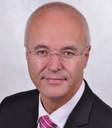
Ulrich Ahle
After an apprenticeship as Toolmaker at Hella KG, Ulrich Ahle studied Mechanical Engineering at the Paderborn University. Firstly he was a design engineer in the field Printer Development at Nixdorf Computer AG, later team leader Technical Processes and responsible project manager for the implementation of the Product Lifecycle Management System Metaphase. From 1996 on he was Director at Siemens Business Services responsible for the setup of the PLM business. After that he became General Manager for e-Business Practice Business Information Management in the area Knowledge Management, Product Lifecycle Collaboration and Business Intelligence. Today Mr. Ahle is responsible for the business with customers from Manufacturing, Retail & Transportation at Atos in Germany. In addition he is responsible for Industrie 4.0 at Atos in Germany. Atos is an inter-national IT service provider with globally more than 100,000 employee.
Keynote Abstract:
Digital Transformation – Challenges for the Manufacturing Industry
Digital Transformation is on the agenda of decision makers from companies and organizations all over the world. For manufacturing companies Industrie 4.0 is the approach to leverage the opportunities of Digital Transformation. There are different definitions of Industrie 4.0 in place depending on the point of view of the different stake holders in the market. Digital Transformation will be highly disruptive to most industries, affecting not only revenue and cost structures but also shaking up the core business and operating models. This will be true for nearly all different industries as Digital will be cheaper, stronger and faster. There is no time to wait bud to identify the right approach and strategy for every single organization or company be it from public, finance or manufacturing. The market situation has changed dramatically. From 1973 to 1983 35% new companies came into the F1000. From 2003 to 2013 there have been 70% new. We are in the “age of the customer” – empowered buyers demand a new level of customer obsession (Forrester). One of the main technology enabler is connectivity – “always connected” is the trigger. Beside the question – how to do the business, better and more efficient processes – we have to ask the question – which business will I do tomorrow? While todays production is linearly organized and optimized within the boundaries of organizational and system siloes manufacturing of the future will fulfill individual customer needs by a collaborative and agile network of capabilities. All these different elements of the network have to be connected and need to be able to communicate to each other. Industrie 4.0 will provide this connectivity and the required standardization. Although this is definitely a future scenario it will be a major change for a lot of manufacturing companies. The presentation will describe how the above mentioned changes can be realized in Manufacturing companies. At the same time use cases will be shown and it will be explained which elements of Industrie 4.0 can already be realized today. Finally it will be presented how companies can be enabled to create their own Industrie 4.0 strategy.
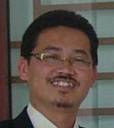
Prof. Madya Dr Shahruddin Bin Mahzan
Shahruddin Mahzan is an associate professor at the Faculty of Mechanical and Manufacturing Engineering, Universiti Tun Hussein Onn Malaysia (UTHM) Malaysia. He received his Bachelor’s degree in Mechanical and Material Engineering from Universiti Kebangsaan Malaysia (UKM), Malaysia in 1999. After having some experiences as a Mechanical Engineer in Sharp Roxy Electronics Corporation (SREC), he joined UTHM, as a tutor. Shahruddin Mahzan then pursued his PhD in University of Sheffield, UK and received his PhD in Mechanical Engineering in 2007 on the topics of Damage Detection in Composite Structure using Advanced Signal Processing Procedures. Shahruddin Mahzan has contributed his expertise in many units as the Head of Department of Engineering Mechanics, Deputy Dean (Academics and International) for the FKMP. At present, Shahruddin Mahzan served as the Dean of Faculty of Mechanical and Manufacturing Engineering (FKMP). Shahruddin Mahzan specialised and researched in mostly damage detection and composite engineering. His main research interests are on Structural Health Monitoring (SHM) and composite materials.
Keynote Abstract:
Natural Fibre Reinforced Composite and Structural Health Monitoring: Possible or Feasible
The emergence of various natural fibres as potential replacement for synthetic fibre has attracted various development and application. However, the issues of natural fibre reinforced composites is always on the mechanical strength and impact damage prone. Recently, structural health monitoring (SHM) has become popular due to its capability to integrate sensor fusion and its characteristics. The adaptability of SHM techniques toward natural fibre composites is investigated. The challenges and issues on implementation of SHM for natural fibre composite are also explored. This talk will discuss on the feasibility study and possibility on SHM implementation for the betterment of composite applications. Therefore a better understanding on feature extraction and selection, as well sensor optimisation can be achieved. Hence, a proper architectural algorithm can be derived in order to establish a good representation of actual condition.
Invited Talks
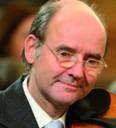
Prof. Dr.-Ing. Michael Sinapius
After his training as a machinist, Prof. Dr.-Ing. Michael Sinapius has studied mechanical engineering at the University of Kassel. Since 1989, he is a researcher of the German Aerospace Center (DLR) and completed his PhD at the RWTH Aachen University in 1993. His first research areas at the DLR were Structural Dynamics. In 2013, he was appointed a professorship for Adaptive Lightweight Structures at the Otto-von-Guericke University Magdeburg, and in parallel, became deputy director of the DLR-institute for Composite Structures and Adaptive Systems in Braunschweig. In 2011, he was offered a position as a professor for Adaptronic Systems at the Braunschweig University of Technology. For the past four years, he established the Institute for Adaptronics and Function Integration with 28 members already. Prof. Sinapius is the speaker of the German Research Foundation (DFG) research group 2021 of Acting Princip-les of Nano-Scaled Matrix Additives for Composite Structures. He is author and co-author of more than 200 publications.
Keynote Abstract:
SHM-Systems for Composite Aircraft Structures based on Lamb wave Analysis
The lecture presents recent results of collaborative research programs on Structural Health Monitoring (SHM) of Composite Airframe Structures through the analysis of guided waves. SHM techniques based on lamb wave propagation are promising for online testing of composite panel like structures. Lamb waves can be excited and received easily by piezoceramic patches attached on plates and plate-like structures. The guided waves propagate over large areas with small attenuation and interact with structural discontinuities such as impacts damages. Therefore, this principle can be used for damage detection and localization. The proposed SHM system is based on a network of a specially designed network of piezoceramic patch actuators. Aspects of the system design considering the in particular anisotropic behavior of composites are addressed as well as the complexity of aircraft design. Wave propagation and interaction in complex structures poses a hard challenge for signal validation due to reflections, refractions or mode conversions. Measuring and imaging techniques are presented which allow a deeper analysis and understanding of wave behavior. Finally, the lecture presents a case study of a SHM system installed and used to inspect a full scale Door Surround Structure. It is produced by means of an automated fiber placement technique. During the manufacturing process, a SHM network formed by nearly 600 piezoelectric transducers is integrated on the structure. The panel was impacted with a large number of impacts inducing skin delaminations and debondings of various structural features. The paper presents initial results of the related damage detection process via the integrated SHM system.
